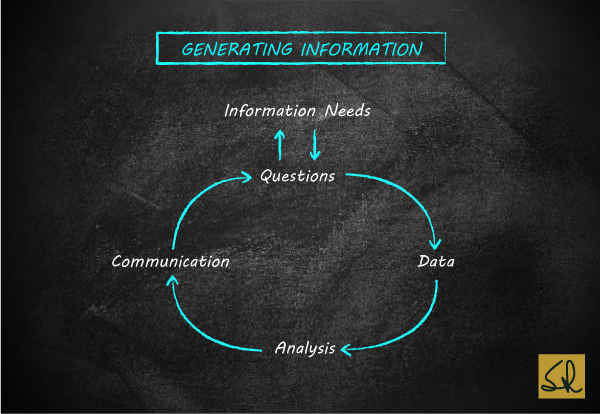QUALITY TOOL: DATA COLLECTION

This week I will keep my promise of introducing Data Collection, the most misunderstood quality tool….the hatchery for COPQ.
Context
How often has your boss instructed you: Go get the data.
You toil for 10 days and return with the data you believe what your boss wanted.
The boss is enraged: This is not the data I wanted!
Your mind runs: What question were you seeking an answer to, boss?
Can you trace the COPQ?
Data and Information
Quality Improvement is an information-intensive activity. We need clear, useful information about problems and their causes in order to make improvements.
In many cases, the absence of relevant information is the major reason why problems go unsolved. For long periods of time. Adding to the COPQ.
Most organizations have tons of data and facts about their operations. However, when quality improvement teams start working on a project, they often find that the information they need does not exist.
Let me explain the difference between data and information:
- Data = Facts
- Information = Answers to Questions
- Information includes Data
- Data does not necessarily include Information.
Quality improvement teams seek answers to questions:
- How often does the problem occur?
- What is causing the problem?
In other words they are seeking information.
But, while good information is always based on data (facts), simply collecting some data does not ensure useful information.
How do we generate useful information?

Information generation begins and ends with questions. To generate information, we need to:
- Formulate precisely the question we are trying to answer
- Collect the data and facts relating to that question
- Analyse the data with quality tools
- Present the data in a way that clearly communicates the answer to the question.
Key Skill
Learning to “ask the right questions” is the key skill for effective data collection.
Accurate and precise data collected through an elaborately designed statistical sampling plan is of no use if it does not clearly address a question that someone needs an answer to.
Insight
The planning for data collection process works backwords through the model in the figure.
Next
In my next edu-blog, on Wednesday 14 October, I will introduce Pareto Analysis. This is an effective quality tool for ensuring economy of effort.

Very well explained the difference between data and information. Collection of data depicted very effectively.
Thank you Rishikesh for your positive feedback. Much appreciated.
Very nicely explained .healthcare quality is simply understanding the data , especially when we are analyzing the key performance indicators. If the data collection tool is not designed as per the desired requirement the entire data collection process goes waste . Looking forward for ur next capsule on Pareto analysis . I have used this tool
Earlier for understanding the delay in Discharge TAT . But would love to read ur capsule for better understanding and implementation. Thanks
Thank you Chetna for your detailed feedback. If only we knew what question we are seeking an answer to!
Willing and excited
Excellent Ashim. Please read all the previous Edu Blogs also.
Very well said and that too in the simplest language that everyone will understand.
We have been designing and supplying dimensional inspection automation solutions for final inspection since last 5 years or more to various precision gear manufacturers across India. Let me concede that none of our customers are using this data for process improvements. We have also developed some such
inspection equipment for in process inspection too and these can help save Lacs of rupees by providing vital inspection data.
Will like to discuss the same with you.
Kindly share your mobile number.
Regards.
Sudhanva Shevade
Please share your mobile number. I will get in touch.